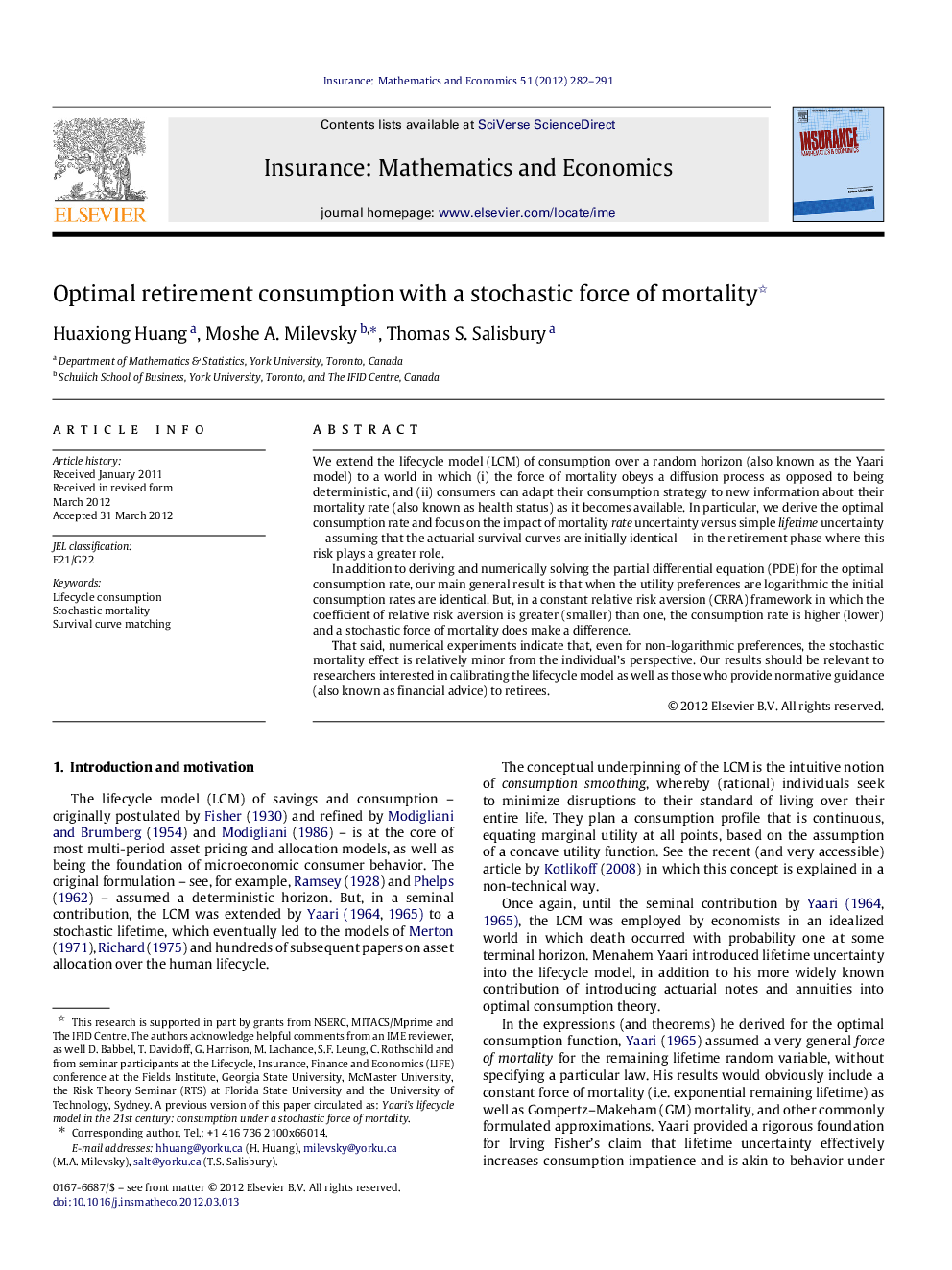| Article ID | Journal | Published Year | Pages | File Type |
|---|---|---|---|---|
| 5076914 | Insurance: Mathematics and Economics | 2012 | 10 Pages |
We extend the lifecycle model (LCM) of consumption over a random horizon (also known as the Yaari model) to a world in which (i) the force of mortality obeys a diffusion process as opposed to being deterministic, and (ii) consumers can adapt their consumption strategy to new information about their mortality rate (also known as health status) as it becomes available. In particular, we derive the optimal consumption rate and focus on the impact of mortality rate uncertainty versus simple lifetime uncertainty - assuming that the actuarial survival curves are initially identical - in the retirement phase where this risk plays a greater role.In addition to deriving and numerically solving the partial differential equation (PDE) for the optimal consumption rate, our main general result is that when the utility preferences are logarithmic the initial consumption rates are identical. But, in a constant relative risk aversion (CRRA) framework in which the coefficient of relative risk aversion is greater (smaller) than one, the consumption rate is higher (lower) and a stochastic force of mortality does make a difference.That said, numerical experiments indicate that, even for non-logarithmic preferences, the stochastic mortality effect is relatively minor from the individual's perspective. Our results should be relevant to researchers interested in calibrating the lifecycle model as well as those who provide normative guidance (also known as financial advice) to retirees.
⺠We extend the lifecycle model of consumption over a (more) random horizon. ⺠We derive the optimal consumption rate and focus on the impact of mortality rate uncertainty versus simple lifetime uncertainty. ⺠When the utility preferences are logarithmic the initial consumption rates are identical. ⺠When the coefficient of relative risk aversion is greater (smaller) than one, the consumption rate is higher (lower). ⺠Experiments indicate that the stochastic mortality effect is relative minor from the individual's perspective.
